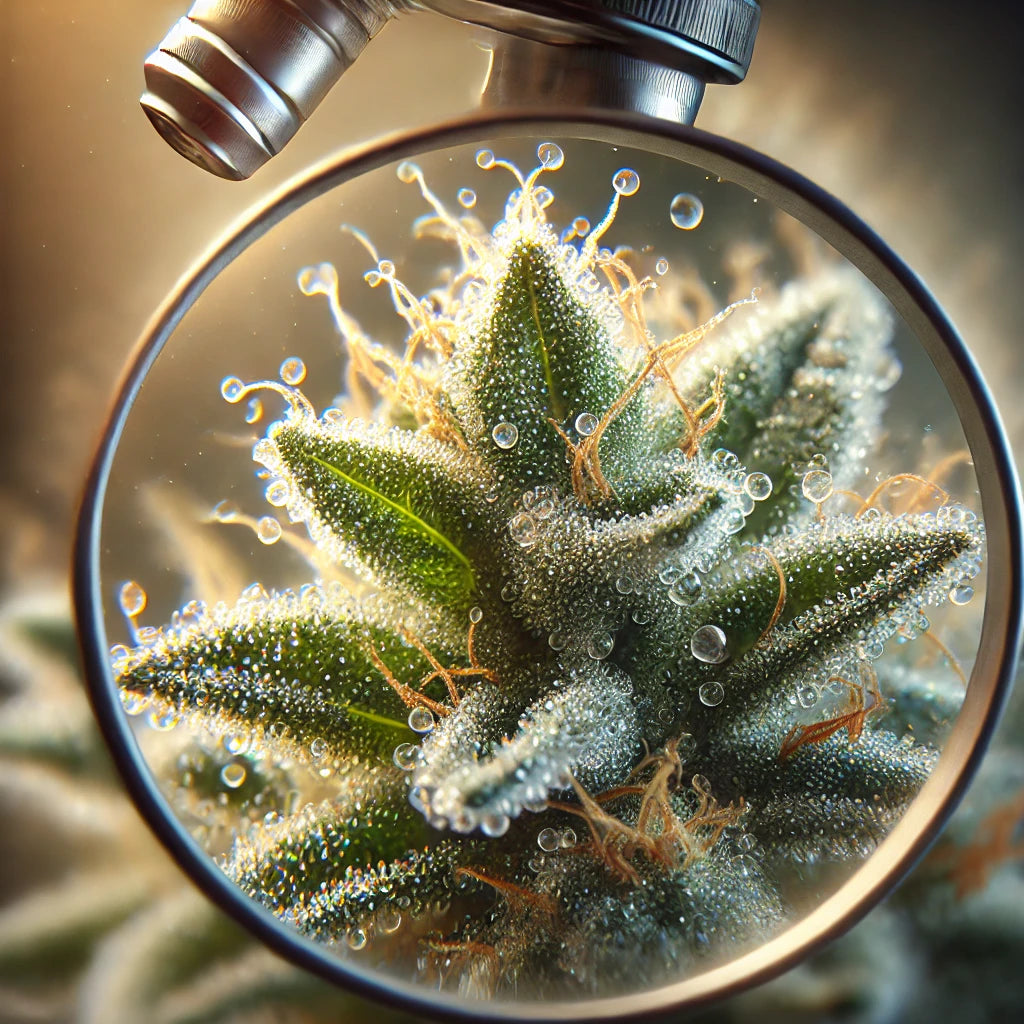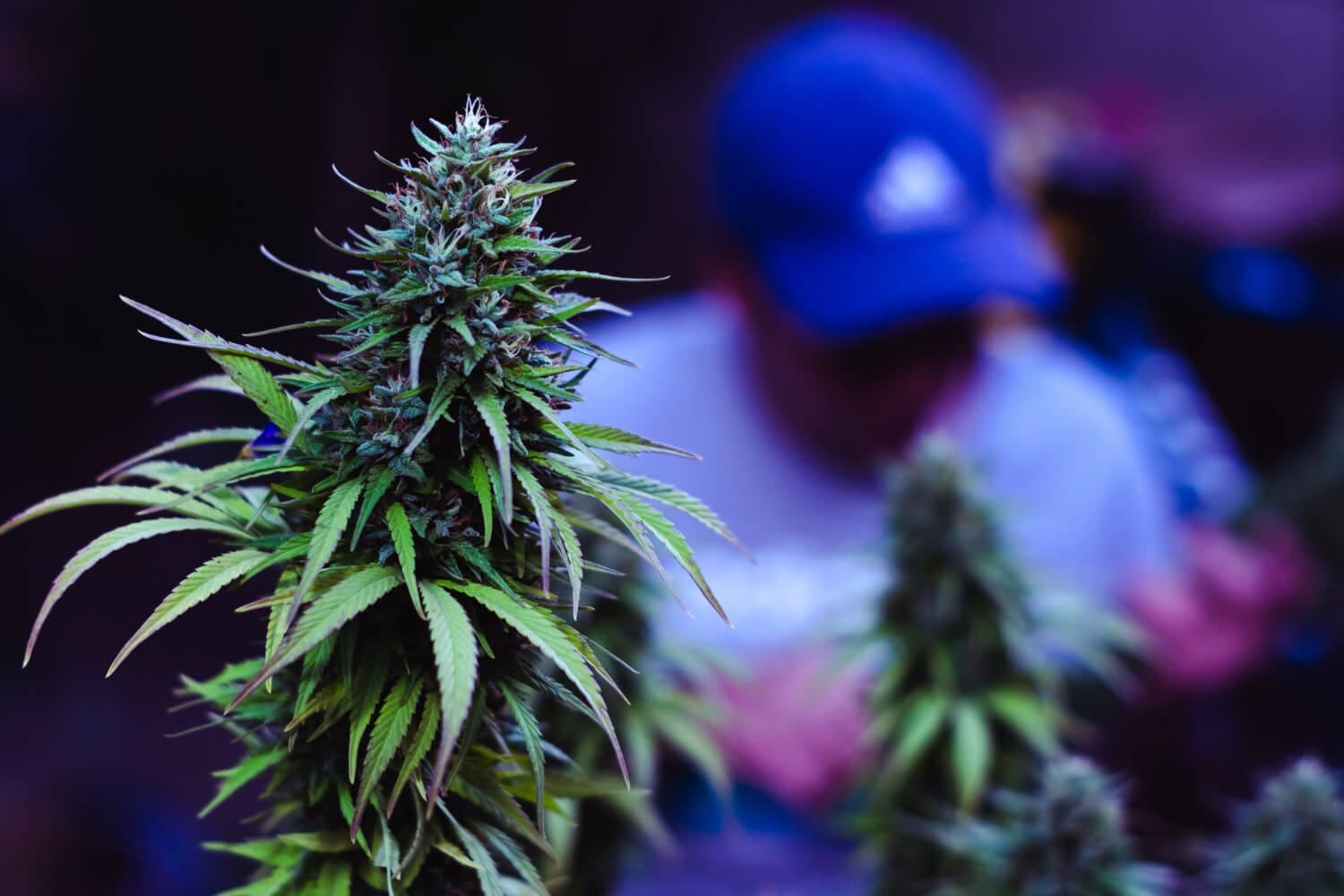Recognizing mold on buds
If you’ve spent weeks caring for your plants with love and patience, there’s hardly anything worse than suddenly finding mold while drying. A single affected bud can ruin your entire harvest—and in the worst case, even be harmful to your health. That’s why it’s crucial to spot mold early and know how to prevent it.
Why Buds Mold During Drying
Mold doesn't just appear out of nowhere. There is always a cause that encourages its growth. When drying buds, these are usually the main factors:
- High humidity: If the air is too humid, the water in the buds doesn't evaporate quickly enough. This creates perfect conditions for mold to develop.
- Poor air circulation: If the air is stagnant and moisture accumulates, mold spores can spread without restriction.
- Buds packed too closely together: If the buds are hanging too close to each other or are stacked, moisture collects between them.
- Temperature issues: Excessive temperatures not only promote mold but can also ruin the aroma of the buds.
If you want to avoid mold, you need to keep an eye on all these factors—but more on that later.


How to safely recognize mold on Buds
Mold can be tricky. Sometimes you spot it right away, other times it only becomes visible when you look closely. Keep an eye out for these signs:
- Color changes: Healthy buds are green, sometimes with purple or orange hues. Mold often appears as a whitish-gray or bluish coating.
- Unusual texture: If your buds feel damp or crumbly when they should be dry, this could indicate mold.
- Fuzz or a furry layer: Does your bud look like it’s covered with a fine, cotton-like coating? Take a closer look if you notice this.
- Musty or sweet smell: Healthy buds have a strong, pleasant aroma. If they smell musty, moldy, or unnaturally sweet, that’s a warning sign.
If you’re unsure whether a bud is moldy, it’s better to be safe. Consuming moldy cannabis can have serious health consequences.
The best methods to prevent mold during drying
Fortunately, there are several things you can do to protect your buds from mold. Here are the most important rules for safe and effective drying:
- The right humidity: Keep the humidity consistently between 50 and 60 percent. A hygrometer will help you monitor the levels accurately.
- Optimal temperature: The ideal temperature is between 18 and 22 degrees Celsius. Higher temperatures speed up drying but can also destroy the terpenes.
- Good air circulation: Make sure the air in your drying room is always moving, but avoid direct airflow from a fan onto the buds.
- Adequate space: Hang or lay out the buds so they do not touch each other. This allows moisture to escape evenly.
- Keep it dark: Light and UV rays can affect the quality of your buds. A dark, well-ventilated room is ideal.
What to do if you discover mold?
Despite all precautions, mold can still develop. If this happens, you need to act quickly:
- Remove affected buds immediately: Even if only a small part appears to be affected, you should not use it. Mold often spreads invisibly.
- Check the rest of the harvest: Carefully inspect all other buds. If they show signs of mold or have a suspicious smell, dispose of them as well.
- Adjust the room climate: If you have found mold, the humidity was probably too high. Adjust your conditions to prevent further infestation.
- Wash your hands and clean the area: Mold spores can settle anywhere. Thoroughly clean your hands, tools, and the drying room.

Mold is preventable – with the right preparation
Mold is every grower's nightmare, but with the right conditions, you can prevent it. The perfect balance of humidity, temperature, and ventilation ensures your buds dry optimally without losing quality.
Stay vigilant, check your harvest regularly, and in the end, enjoy what you've worked so hard for—mold-free, perfectly dried buds.
Tips for preventing mold on cannabis buds
Mold growth on your buds is not just a nuisance—it can ruin your entire yield. However, with a few simple precautions, you can significantly reduce the risk. Here are some proven tips:
- Optimal humidity: During the drying process, humidity should be kept between 55-60%. Excess moisture encourages mold growth, while humidity that is too low can dry out the buds. A hygrometer will help you keep track.
- Air circulation is crucial: Make sure your cannabis buds are well ventilated. Constant air circulation prevents moisture from accumulating on the buds. Ensure that drying rooms are well ventilated, but avoid direct drafts that could dry out the buds.
- Avoid overcrowding: When hanging buds to dry, make sure they have enough space. Arranging them too closely together restricts air circulation and increases the risk of mold.
- Temperature control: The ideal temperature for drying cannabis is between 18-21°C. Temperatures that are too high cause rapid evaporation, which dries out the outer layer of the buds while leaving the inside moist—an ideal environment for mold.
- Cleanliness matters: A clean drying room free of dust and dirt not only results in better buds, but also reduces the risk of mold spores taking hold. Clean the room regularly and disinfect the surfaces where you hang or place the buds.
Frequently asked questions about mold on cannabis buds
Mold on cannabis buds usually appears as a white, gray, or green fuzz covering the surface of the buds. Look out for a fuzzy texture or discolored spots. If you suspect your buds are moldy, they often have an unpleasant smell, similar to must or damp wood.
Smoking moldy cannabis can be harmful to your health. Mold spores can enter your lungs and cause respiratory issues or allergic reactions. That’s why it’s important not to consume moldy buds. Dispose of them safely to prevent the spread of spores.
In most cases, it is difficult to save moldy buds. The mold has penetrated deep into the buds, and even if you remove the visible mold, spores often remain. It is better to dispose of the affected buds to avoid health risks.
The best ways to prevent mold are to maintain a constant humidity level of 55-60%, ensure proper ventilation, and keep the temperature between 18-21°C. Make sure the buds are not hung too closely together and clean the room regularly to prevent mold spores.


